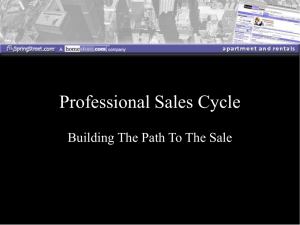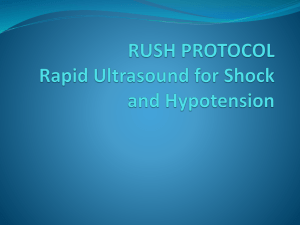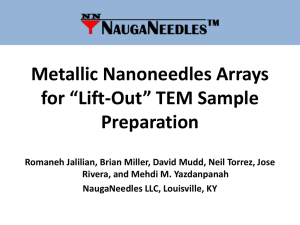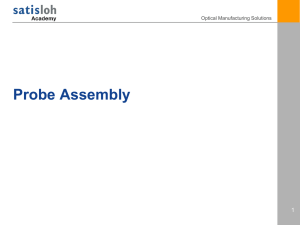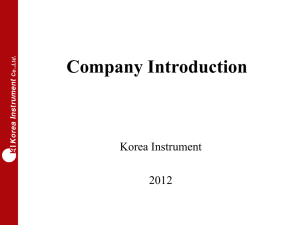Wafer Probing for 3D Chips
advertisement
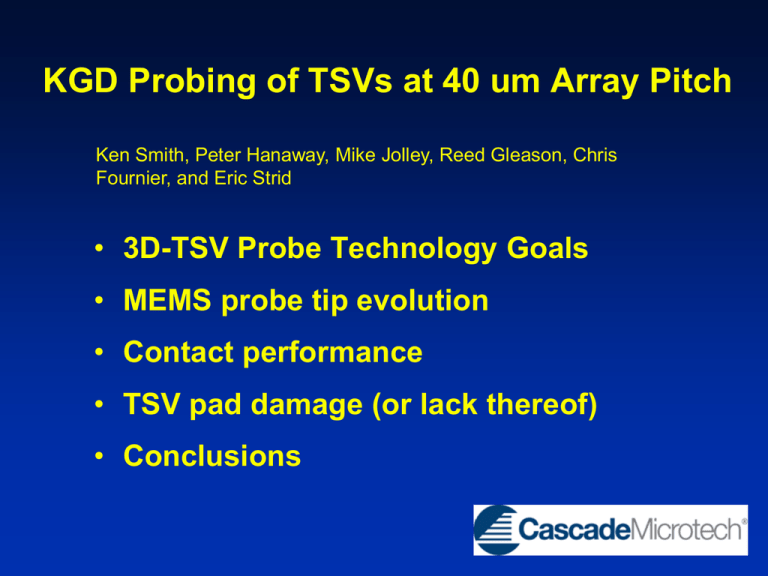
KGD Probing of TSVs at 40 um Array Pitch Ken Smith, Peter Hanaway, Mike Jolley, Reed Gleason, Chris Fournier, and Eric Strid • 3D-TSV Probe Technology Goals • MEMS probe tip evolution • Contact performance • TSV pad damage (or lack thereof) • Conclusions 3D-TSV Probe Technology Development Goals • Scale array pitch to 40 um • Reduce pad damage to allow prebond probe • Decrease cost of test – Simplified, high yield process • Fundamental understanding and accurate models of contact performance Pyramid Probe Technology • RF filters, switches • Process monitors (including M1 copper) • RFSOC Multi-DUT 3D Probing Requires a New Cost Structure DRAM & Flash 4 2 COGS/ pin ($) in 2012 Logic/SoC 1 0.50 0.25 0.12 0.06 3 6 12 25 50 100 200 400 800 Array Pitch (um) Technology must be printed, repairable, scalable, compliant 1600 Scaling a Probe Card • • • • Decrease XYZ dimensions by K Same materials Decrease Z motions by K Force per tip decreases by K2; tip pressure constant 100 um pitch ~10 gm/tip 35 um pitch ~1 gm/tip 3D TSV Probe Card Architecture • Pyramid Probe ST: Pads on membrane – Routing limitation ~3-4 rows deep from DUT pad perimeter • Replaceable contact layer PCB PCB Plunger Wafer Replaceable Contact Layer • Tips are 5 um square and 20 um tall • 35 um pitch array • 24 x 48 tips Contact resistance versus probing force • Single 12 um square tip • Sn plated wafer 5 um thick Contact resistance versus probing force • 6 um tip • Force required is similar to 12 um tip Force (gm•f ) vs. Deflection (um) • 1gm•f /um tip design • High durometer elastomer Force (gm•f ) vs. Deflection (um) • 0.1 gm•f tip design • Low durometer elastomer Pyramid Probe ST Routing • Unique fine-pitch routing • High-frequency performance similar to Pyramid Probes • Example is memory array • – 50 um x 40 um pad pitch • – 40 x 6 pad array Fully routed 6x40 array with 40-50 um pitch Optical photograph of probe mark array • Marks are exceptionally uniform • ~1 gram / contact for low pad damage Profilometer scan of probe mark array • Maximum depth 100 nm • Maximum berm 500 nm Probe marks on ENIG TSV pad • Exaggerated conditions: 10 TDs at 2.5 gf • Navigation grid (50 x 40 um) shows 3 probe marks on the 100 um diameter pad Probe mark depth less than surface roughness (~200 nm) Probe mark on ENIG pad • ~3 x 7 um • Exposed Ni ~50% • Depends on surface grains Probe mark uniformity: Profilometer scans • Depth: Mean 68, Stdev 11 • Berm: Mean 363, Stdev 76 TDR traces on open and short • <40 ps rise / fall times (100 ps / div) • Limited by routing density in ST Conclusions • Practical probe cards are capable of 40 um pitch and tip forces below 1 gm • Pad damage at these low forces is extremely small with scrub marks less than 100 nm deep • Lithographically printed probe cards enable a scalability path to lower cost and finer pitches • Probing the TSVs is not out of the question


